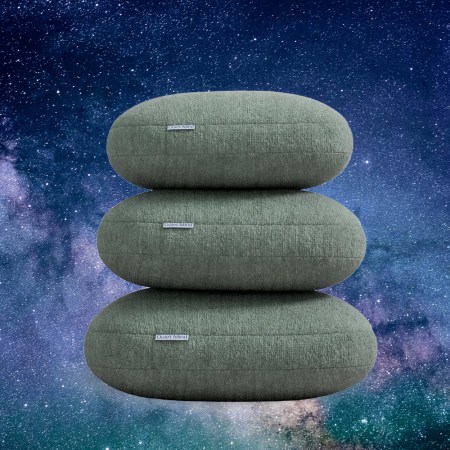The meditation market size has nearly doubled over the last five years, as small startups and tech titans alike have tried to streamline and commodify a practice we all seem to have a ton of trouble performing.
Stressed adults can now meditate with an assist from apps, vibrating pillows and startling VR programs, which are capable of transporting a deep-breathing trainee to, say, a sunny glen in the Scottish Highlands. In a world where there’s always another email to reply to, successful meditation ironically thrives on such distractive elements. Asking WFH employee-parents to sit in the corner of a room and immediately find zen is a tall order. But well-placed stimuli give them a fighting chance.
One, unheralded method worth considering? “Binaural beats.” They’re an aural stimulus, with years of encouraging research, which not only gets unwilling minds in the mood, but literally play on frequencies in the brain, inducing real-time relaxation.
The beats are actually an auditory illusion. You put your earbuds in and hear two different tones — one in each ear — at the same time. Your brain then parses out the binaural beat, which is the tone at the difference of those two tones. This difference is generally pretty small (30 Hertz or less, if that unit of measurement means anything to you), but it can have a big impact on the brain. (Check out a schematic of “theta activity,” which is associated with cognitive creativity, in a brain on binaural beat stimulus here.)
Some publications have let their brains run wild (literally) with the possibilities in brainwave hacking, pegging it as a cure for insomnia, avenue for lucid dreaming and perhaps even a natural way to get high. The science is way too young for anybody to make those assertions with any certainty. But research does suggest that you can choose from a “menu” of binaural beats, depending on what sort of meditative state you’re looking to reach in your brain.
For instance, a “delta” tone (4 Hz or less) could help encourage sleep and healing, an “alpha” tone (between 8 and 13 Hz) could boost mood and learning, and a “gamma” tone (above 30 Hz) could potentially increase focus and memory recall.
The good news is that experimenting with these frequencies comes at zero cost to your brain and wallet. They’re safe, free, and unsurprisingly, well-represented on YouTube. There are no guarantees that binaural beats supercharge your brain overnight, but like any meditative practice, time and patience could pay dividends.
Respect the practice the way you normally would — find a quiet place, at a calm time in your day — and try to devote at least 15 minutes to the beat, which should give your brain enough time to synchronize with its tone. Monitor how you feel on that particular frequency, before moving to a different one next time. Meditation isn’t easy, but this could be the backdoor you’ve been waiting for.
Whether you’re looking to get into shape, or just get out of a funk, The Charge has got you covered. Sign up for our new wellness newsletter today.


















